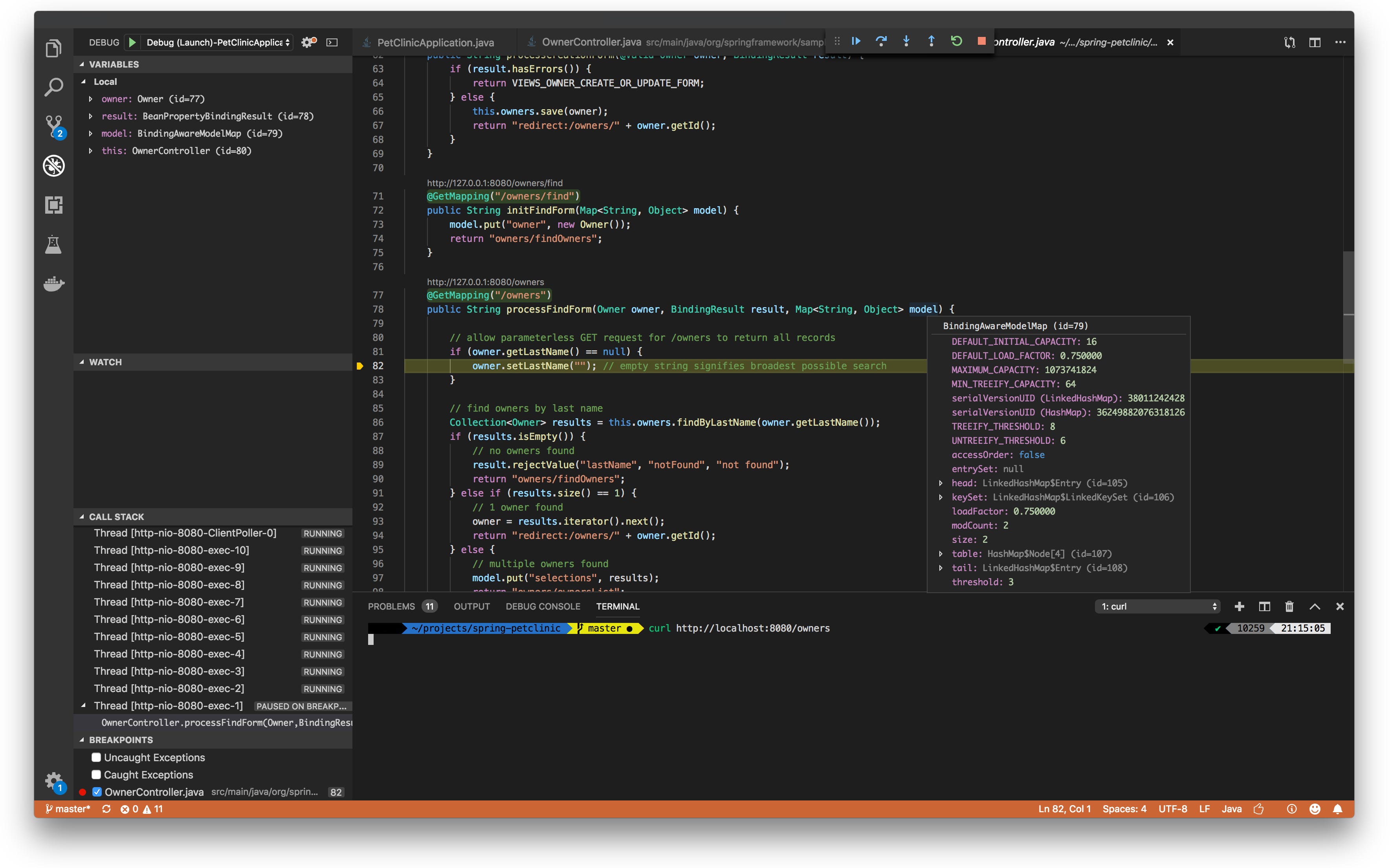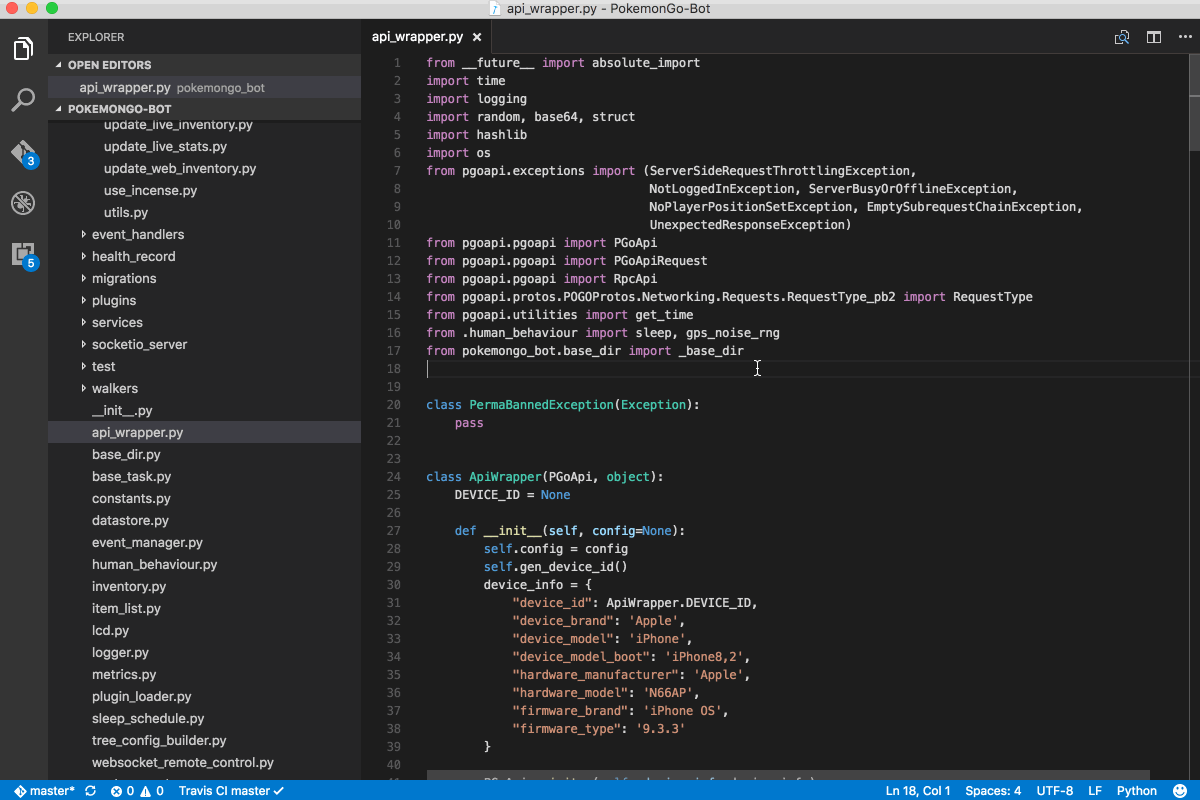- Visual Studio Code Spring Boot Dashboard Empty
- Spring Boot Visual Studio Code
- Visual Studio Code Spring Boot App
- Spring Boot Visual Studio Code Free
Azure Spring Cloud provides a managed service that lets you run microservices on Azure using Spring Boot with no code changes. Use the Azure Spring Cloud extension for VS Code to quickly create, manage and deploy apps to an Azure Spring Cloud instance.
Sign up today for your free Azure account and receive 12 months of free popular services, $200 free credit and 25+ always free services 👉 Start Free.
Tired of writing boilerplate code for your CRUD controller? This video shows you how to use an awesome Visual Studio Code extension to easily and quickly ge. Spring Tools 4 is the next generation of Spring tooling for your favorite coding environment. Largely rebuilt from scratch, it provides world-class support for developing Spring-based enterprise applications, whether you prefer Eclipse, Visual Studio Code, or Theia IDE. Browse other questions tagged spring-boot visual-studio-code or ask your own question. The Overflow Blog How often do people actually copy and paste from Stack Overflow? Podcast 331: One in four visitors to Stack Overflow copies code. Featured on Meta Stack Overflow for Teams is now free for up to 50 users, forever. Java Web Apps with Visual Studio Code. This tutorial shows you how to create a Java web application with Visual Studio Code. You'll learn how to run, debug, and edit the Java web app locally and eventually on the cloud. A simple Spring Boot Getting Started web app. Before you begin.
Installation
- Download and install the Azure Spring Cloud extension for Visual Studio Code
- Wait for the extension to finish installing then reload Visual Studio Code when prompted
- Once complete, you'll see an Azure icon in the Activity Bar
If your activity bar is hidden, you won't be able to access the extension. Show the Activity Bar by clicking View > Appearance > Show Activity Bar
- Sign in to your Azure Account by clicking Sign in to Azure…
If you don't already have an Azure Account, click 'Create a Free Azure Account' or you can try Azure for free
Deploy your first Spring Boot app to Azure Spring Cloud
Once you are signed in to your Azure account and you have your app open in VisualStudio Code, click the Azure icon in the Activity Bar to open the Azure Explorer and you will see the Azure Spring Cloud panel.
Right-click on your subscription and click Create Service in Portal. Steam remote play roku. Finish the following steps on Azure Portal to create an Azure Spring Cloud service instance.
After the service instance is created, refresh the Azure Explorer and it will show up. Right-click on the service instance and click Create App. Type app name, selectJava version and then press Enter to start creating.
The app will be ready in a few minutes, right click on the App and click Deploy, select your built Jar file when prompted.
You can see the deployment status on the bottom right. Once done, click Access Public Endpoint to test the app running on Azure, click Yes when prompted to assign public endpoint. Be aware that only Spring Boot fat Jar is supported, learn more about apps on Azure Spring Cloud.
Scale the App
You can easily scale the app by right click on the Instance count under Scale Settings and click Edit. Type 2 and press Enter to scale the app.
Stream Your Application Logs
Expand the App Instances node, right click the instance you want to see logs and click Start Streaming Logs.
The Visual Studio Code output window opens with a connection to the log stream

Contributing
There are a couple of ways you can contribute to this repo:
- Ideas, feature requests and bugs: We are open to all ideas and we want to get rid of bugs! Use the Issues section to either report a new issue, provide your ideas or contribute to existing threads.
- Documentation: Found a typo or strangely worded sentences? Submit a PR!
- Code: Contribute bug fixes, features or design changes:
- Clone the repository locally and open in VS Code.
- Install TSLint for Visual Studio Code.
- Open the terminal (press
CTRL+`) and runnpm install. - To build, press
F1and type inTasks: Run Build Task. - Debug: press
F5to start debugging the extension.
Legal
You will need to sign a Contribution License Agreement before we can accept your pull request.All you need to do is to submit a pull request, then the PR will get appropriately labelled (e.g. cla-required, cla-norequired, cla-signed, cla-already-signed). If you already signed the agreement we will continue with reviewing the PR, otherwise system will tell you how you can sign the CLA. Once you sign the CLA all future PR's will be labeled as cla-signed.
Code of Conduct
This project has adopted the Microsoft Open Source Code of Conduct. For more information see the Code of Conduct FAQ or contact opencode@microsoft.com with any additional questions or comments.
Telemetry
VS Code collects usage data and sends it to Microsoft to help improve our products and services. Read our privacy statement to learn more. If you don’t wish to send usage data to Microsoft, you can set the telemetry.enableTelemetry setting to false. Learn more in our FAQ.
License
Testing Java in Visual Studio Code is enabled by the Java Test Runner extension. It's a lightweight extension to run and debug Java test cases. The extension supports the following test frameworks:

- JUnit 4 (v4.8.0+)
- JUnit 5 (v5.1.0+)
- TestNG (v6.8.0+)
Note: More information about the test frameworks can be found at JUnit and TestNG.
The Java Test Runner works with the Language Support for Java by Red Hat and Debugger for Java extensions to provide the following features:
- Run/Debug test cases
- Customize test configurations
- View test report
- View tests in Test Explorer
- Show test logs
If you run into any issues when using the features below, you can contact us by clicking the Report an issue button below.
Quickstart
Make sure you have the below tools available already
- JDK (version 11 or later)
- VS Code (version 1.23.0 or later)
You may refer to Java Extensions to set up the environment.
Note: More information about JDK can be found at supported Java versions.
Getting Started for JUnit 5
Please refer to Getting Started from the JUnit 5 official documentation.
Note: You can use junit-platform-console-standalone.jar in projects that manually manage their dependencies similar to the plain-old JAR known from JUnit 4.
Getting Started for JUnit 4

Please refer to Download and Install from the JUnit 4 official documentation.
Getting Started for TestNG
Please refer to TestNG Docs from the TestNG official documentation.
Run|Debug CodeLens
When you open a project with test cases from supported frameworks, Test Runner will be activated and you will find Run|Debug on the CodeLens of your test functions. Click on the CodeLens to run the individual test case. You can also access and run a group of test cases from the Test Explorer. For more information on debugging test cases, see Debugging Java.
Here's a brief session with TestNG:
Visual Studio Code Spring Boot Dashboard Empty
Run/Debug Test Cases
- The extension will generate Run Test and Debug Test shortcuts (also known as CodeLens) above the class and method definition. Select them to start running or debugging the target test cases.
Note: If you cannot see the CodeLens in your editor, please refer to this issue comment as a workaround.
Test Explorer
- The Test Explorer is the place to show all the test cases in your project. You can also run/debug your test cases from here.
- Click the node in the Test Explorer will navigate to the location of the source code.
Note: If the Test Explorer is empty, please refer to this issue comment as a workaround.
Customize Test Configurations
- Sometimes you may want to customize the configuration for running the test cases. To achieve this, you can add it into your workspace settings under the section:
java.test.config.
Note: More details can be found in Run with Configuration.
View Test Report
- After running/debugging the test cases, the test report is opened automatically. You can also see the final results in the status bar, by clicking on it to show the Test Report.
- You can also click the ✔️ or ❌ mark in the CodeLens to open the Test Report.
- For a quick peek of the test status or results, you can see them in the Test Explorer directly.
- You can navigate to the source location of the target test case by clicking the navigate button.
JUnit5 Support
The JUnit 5 support covers frequently used annotations such as @DisplayName, @ParameterizedTest, @TestFactory, @TestTemplate, and @Nested. It also supports meta-annotations and composed annotations.
FAQ
If you meet any problem when using the extension, you can refer to the FAQ to check if there is an answer to your problem.
More Information
Visit the GitHub repository of the Java Test Runner for more details on commands and settings.
Spring Boot Visual Studio Code
Next steps
Visual Studio Code Spring Boot App
Read on to find out about:
Spring Boot Visual Studio Code Free
- Debugging - Find out how to debug your Java project with VS Code.
- Java Extensions - Learn about more useful Java extensions for VS Code.

Comments are closed.